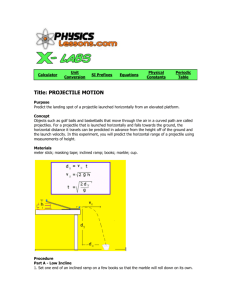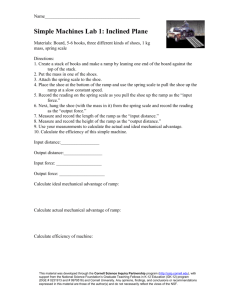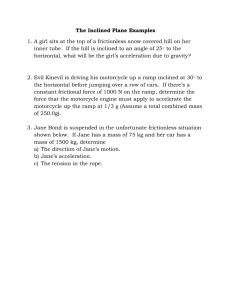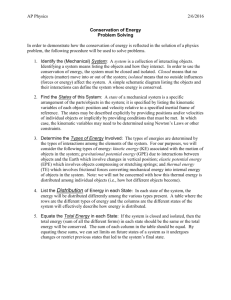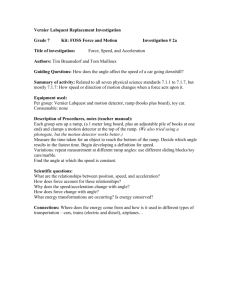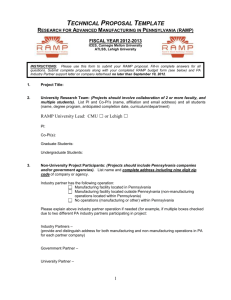Robbie Maddison Arc Jump
advertisement
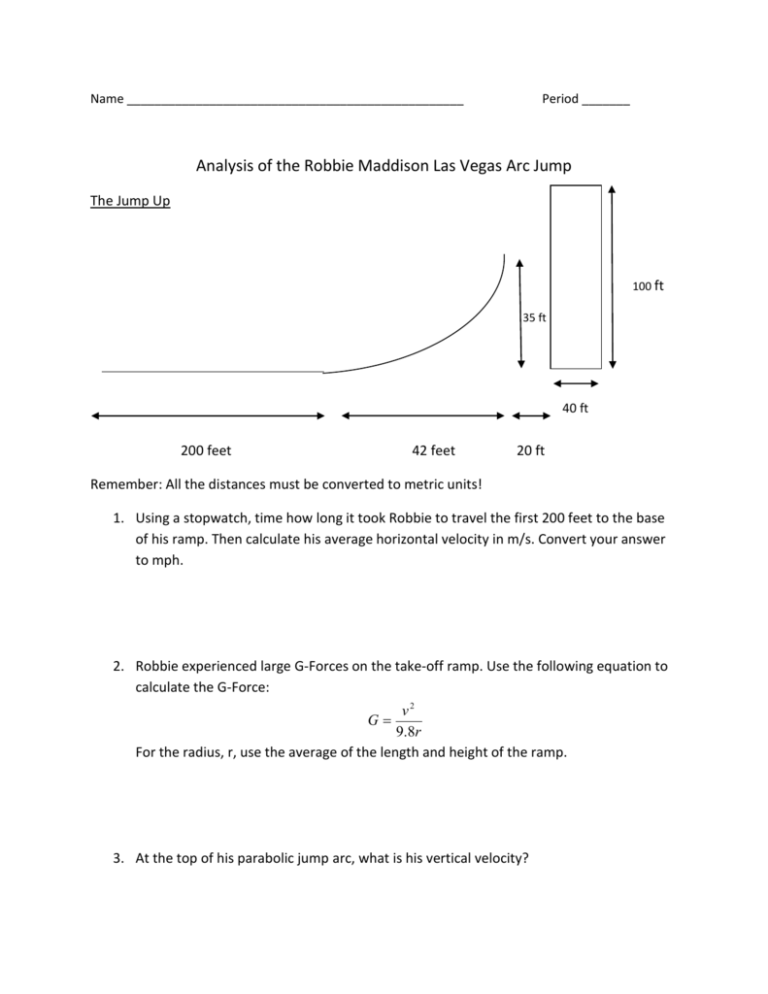
Name _________________________________________________ Period _______ Analysis of the Robbie Maddison Las Vegas Arc Jump The Jump Up 100 ft 35 ft 40 ft 200 feet 42 feet 20 ft Remember: All the distances must be converted to metric units! 1. Using a stopwatch, time how long it took Robbie to travel the first 200 feet to the base of his ramp. Then calculate his average horizontal velocity in m/s. Convert your answer to mph. 2. Robbie experienced large G-Forces on the take-off ramp. Use the following equation to calculate the G-Force: v2 9 .8 r For the radius, r, use the average of the length and height of the ramp. G 3. At the top of his parabolic jump arc, what is his vertical velocity? 4. Jumping off the ramp, his velocity was projected at approximately 70 0 above the horizontal. Use this information along with the two velocities from questions 1 and 3 to calculate the time it took him to reach the top of his parabolic arc. 5. Calculate his maximum height above the ground. 6. It was established that Robbie reached a maximum height of approximately 105 feet above the ground. How favorably does your result compare to that? 7. Knowing that the Paris Arc structure is 100 feet tall, now determine the time needed for him to fall from his highest point unto the structure. Use the height you calculated in question 5. 8. From the video, you can see that he landed about in the middle of the Arc structure. Therefore, knowing the total horizontal distance between the top of his take-off ramp and the spot where he landed, as well as the total time he was in the air, calculate his horizontal velocity coming off the ramp. This is vx. Give your answer in both m/s and mph. The Jump Back Down Landing spot 55 ft 100 ft 600 20 ft x 1. Using a stopwatch, time how long it took Robbie to free fall from the top of the Arc structure onto his landing ramp. 2. Knowing that his initial vertical velocity was zero, calculate how far he fell. Give your answer in both meters and feet. 3. Calculate his vertical velocity when he hit the ramp. Give your answer in both m/s and mph. 4. Use trigonometry and the dimensions of the landing ramp to determine the horizontal position, labeled “x” in the diagram, of his landing. Give your answer in both feet and meters. 5. Now, knowing his horizontal landing spot, and the dimensions of the ramp as given in the diagram, you can determine his horizontal velocity coming off the Arc. Give your answer in both m/s and mph. 6. Finally, as you look at the diagram, notice that the upper portion of his sloped landing ramp is 55 feet down and 20 feet out horizontally from the edge of the Arc. Use those dimensions to calculate the minimum horizontal velocity he would have needed in order to have safely reached the upper portion of his sloped landing ramp. At a speed less than this, he would have crashed on the flat section of the ramp. Give your answer in both m/s and mph. Resources/references: http://espn.go.com/action/news/story?id=3728874 http://www.redbullusa.com/newyearnolimits


